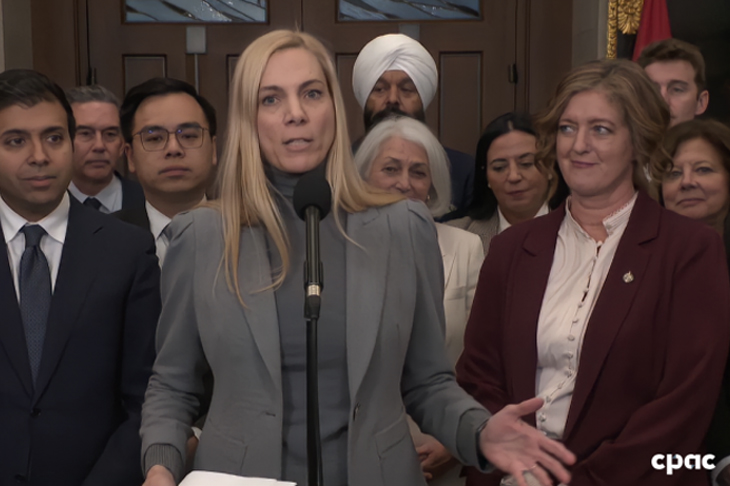WITH THE FEDERAL GOVERNMENT to begin getting into the weeds of modernizing the Telecommunications Act and Broadcasting Act at some point in 2018 (one hopes), a major consideration will be whether it’s time to do away with two governing pieces of legislation and prune them into a single Communications Act.
Greg Taylor, an assistant professor in the Department of Communications, Media and Film at the University of Calgary, said the government made a mistake back in the 1990s to fold the Department of Communications just as the Internet was coming on the scene.
“I think what we need is one department overseeing telecom and broadcasting. Broadcasting still matters but I think that to argue there is a difference between telecom and broadcasting is a little dated. It’s really just about the movement of digital data right now,” he said.
Having broadcasting and telecommunications under the control of a single legislative master is common in other countries. The United Kingdom has Ofcom and the US has the Federal Communications Commission (FCC), for example. In Canada, the CRTC oversees and administers the two Acts, but some important functions, such as overseeing spectrum, is still controlled by the government itself.
A combination could happen in Canada and it could be done even without having to open up both Acts to legislative review. Taylor said the federal government could use its Public Service Rearrangement and Transfer of Duties Act to move spectrum from ISED to the CRTC. It wouldn’t necessarily be an easy task to accomplish but it may help avoid pitfalls associated with reviewing and rewriting the Broadcasting Act in particular.
“As soon as that can is opened, there are strong forces that lobby within Ottawa where it could be a regressive move as far as public input, as far as obligations of media companies to serve the public that are entrenched in the Broadcasting Act. Once we open the Acts again we kind of go back to square one for trying to establish these areas,” he explained.
Taylor is referring to the power centre in the current broadcasting system – it lies in the hands of the distributors. “I think content producers and broadcasters certainly had a more powerful voice (back in 1991) than they do right now. Right now the real power lies at distribution, and so I think that’s a big issue,” he added.
Arguments in favour of merging the Acts have been presented many times over the last several years.
Cartt.ca reported on comments from then CRTC chair and former Commissioner of Competition Konrad von Finckenstein back in 2010 when he said it no longer made sense to apply different rules to a converged company’s telecom and broadcasting activities. “We need to break down these legislative distinctions, which are becoming increasingly artificial, and develop a comprehensive approach to communications,” he said. (more HERE)
More than seven years later, von Finckenstein still holds the same view. The Internet is a totally different communications structure from traditional point to multipoint broadcasting or point to point telecommunications, he noted, adding the distinction on the delivery mode should be eliminated.
“We say if it’s delivered over cable you get this treatment. If you get it delivered over wireline you get this treatment. And if it’s delivered wireless, it’s different.” – Konrad von Finckenstein
“We say if it’s delivered over cable you get this treatment. If you get it delivered over wireline you get this treatment. And if it’s delivered wireless, it’s different. I think that that kind of distinction should say any communications will be treated the following way regardless of which mode you have with it whether it’s satellite, wireline, wireless or cable,” he told Cartt.ca in a recent interview.
At least one small market broadcaster and specialty channel provider thinks it’s time to stop treating broadcast and telecom companies separately. Cal Millar, president of Channel Zero (owner of CHCH, Rewind, Silver Screen Classics and other brands) suggests the distinctions between broadcasting and telecom are no longer relevant.
“In this day and age is broadcast even the right term?” he asked, noting that new terminology has had to be created to deal with the deliver of digital bits.
“Yes, a number of us are still involved in the broadcast but we’re also involved in narrowcast, and we’re also involved in two way communications. Why would we have one Act? Why don’t we call it the Communications Act and stop any distinction, move it all together and then talk about cultural communications and talk about the nuts and bolts of the industry?” he asked.
Canada’s independent producers aren’t opposed to seeing a merged legislative framework for the telecommunications and broadcasting sectors.
“There very well may be advantages to doing that in terms of taking a single coherent approach and a single piece of legislation to how the entire system is regulated,” said Reynolds Mastin, president of the Canadian Media Producers Association (CMPA). “So we’re aren’t shutting the door to that but I think it’s way too early for us to be able to say that that’s the way to go rather than modernizing the Broadcasting and Telecommunications Acts and keeping them as separate pieces of legislation.”
For others, it’s not so cut and dried with respect to merging the two. John Lawford, executive director of the Public Interest Advocacy Centre (PIAC) suggests both Acts are in good shape as they are already. Problems arise because of “other pressures in the system that make the Telecom and Broadcasting Acts have to carry a lot of weight,” he adds.
Lawford refers to the Broadcasting Act having to deal with new distribution models and protecting Canadian content while the telecommunications legislation is facing challenges around content favouring and website blocking.
Generally, however, the two Acts don’t actually need a major overhaul, adding that the broadcasting side may need a little beefing up and clarity of how to proceed into the future.
Part III of the series will explore issues related to the rise of online content delivery platforms.
Original illustration by Paul Lachine, Chatham, Ont.









